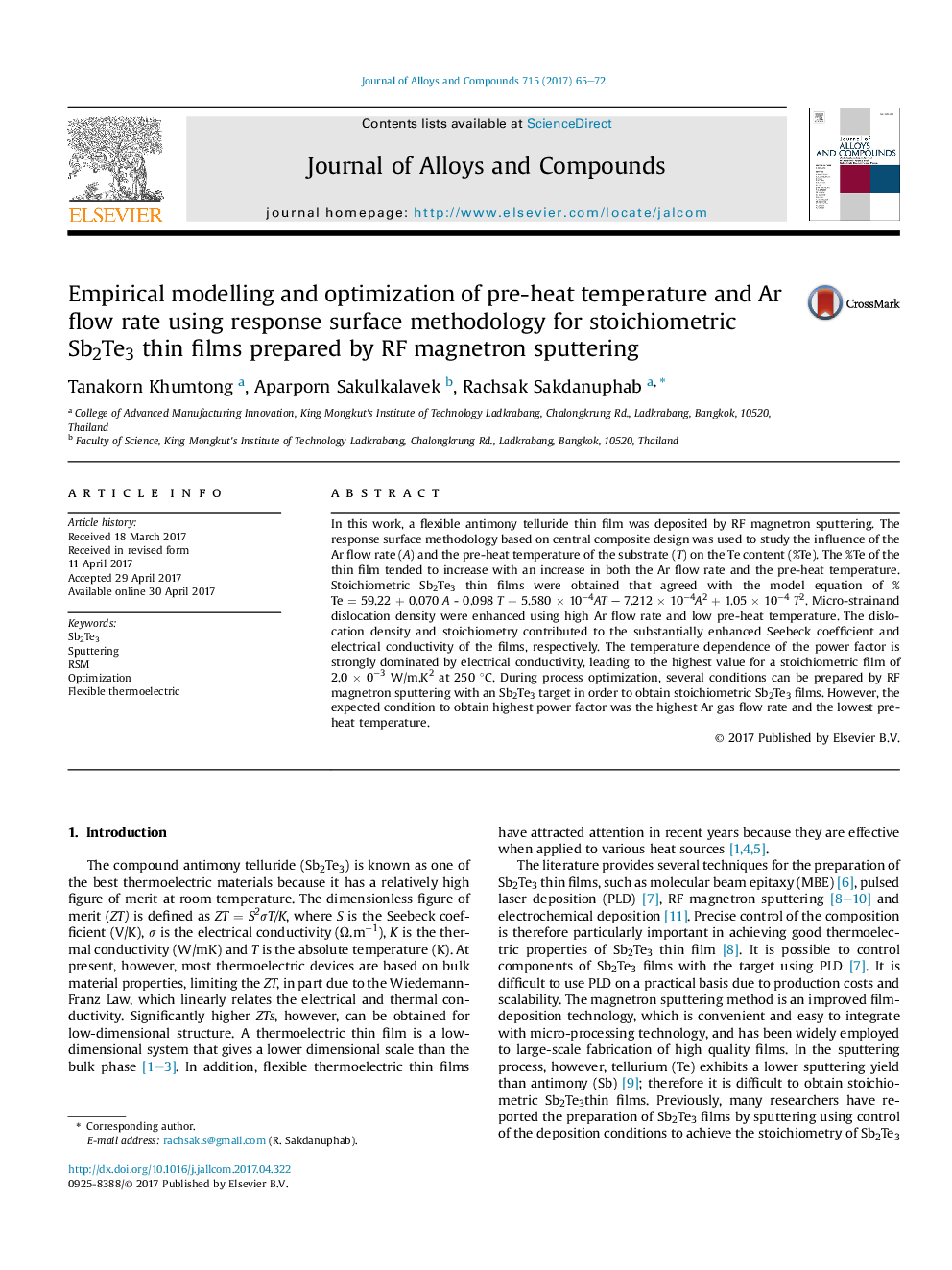| Article ID | Journal | Published Year | Pages | File Type |
|---|---|---|---|---|
| 5459165 | Journal of Alloys and Compounds | 2017 | 8 Pages |
Abstract
In this work, a flexible antimony telluride thin film was deposited by RF magnetron sputtering. The response surface methodology based on central composite design was used to study the influence of the Ar flow rate (A) and the pre-heat temperature of the substrate (T) on the Te content (%Te). The %Te of the thin film tended to increase with an increase in both the Ar flow rate and the pre-heat temperature. Stoichiometric Sb2Te3 thin films were obtained that agreed with the model equation of %Te = 59.22 + 0.070 A - 0.098 T + 5.580 Ã 10â4AT - 7.212 Ã 10â4A2 + 1.05 Ã 10â4T2. Micro-strainand dislocation density were enhanced using high Ar flow rate and low pre-heat temperature. The dislocation density and stoichiometry contributed to the substantially enhanced Seebeck coefficient and electrical conductivity of the films, respectively. The temperature dependence of the power factor is strongly dominated by electrical conductivity, leading to the highest value for a stoichiometric film of 2.0 Ã 0â3 W/m.K2 at 250 °C. During process optimization, several conditions can be prepared by RF magnetron sputtering with an Sb2Te3 target in order to obtain stoichiometric Sb2Te3 films. However, the expected condition to obtain highest power factor was the highest Ar gas flow rate and the lowest pre-heat temperature.
Keywords
Related Topics
Physical Sciences and Engineering
Materials Science
Metals and Alloys
Authors
Tanakorn Khumtong, Aparporn Sakulkalavek, Rachsak Sakdanuphab,
